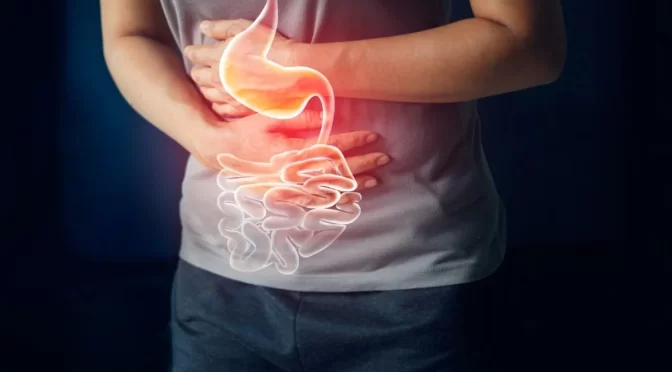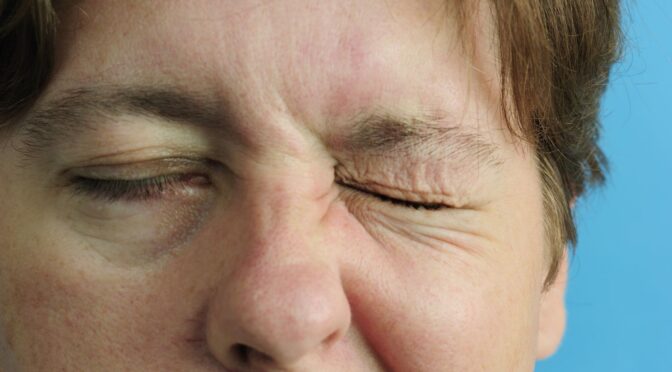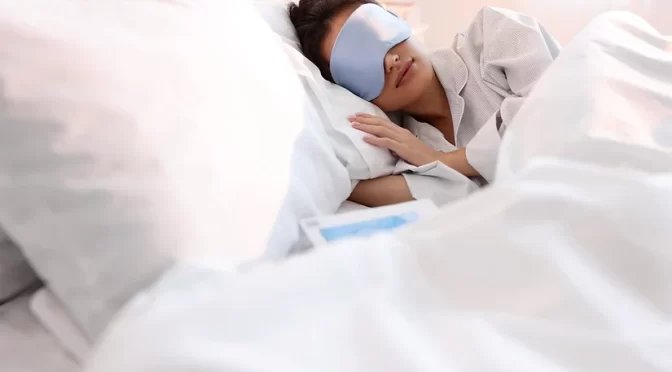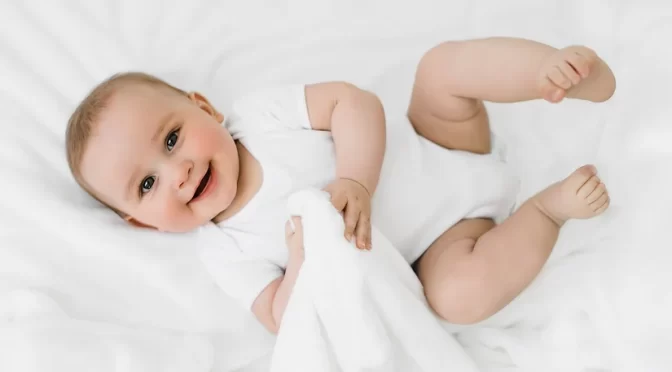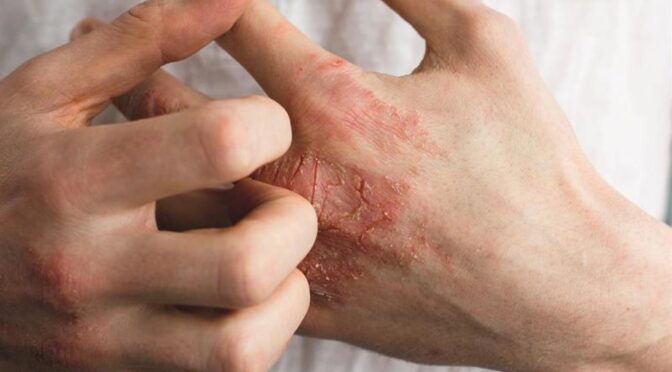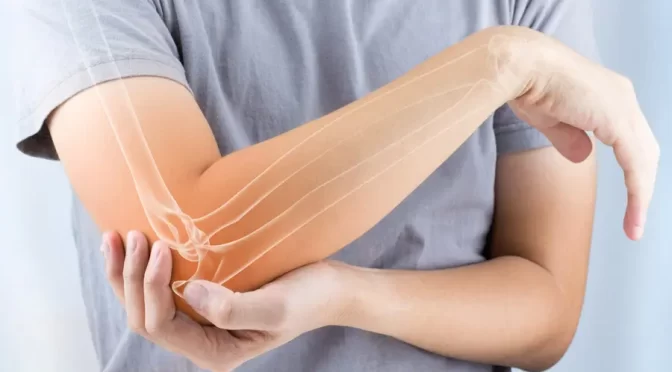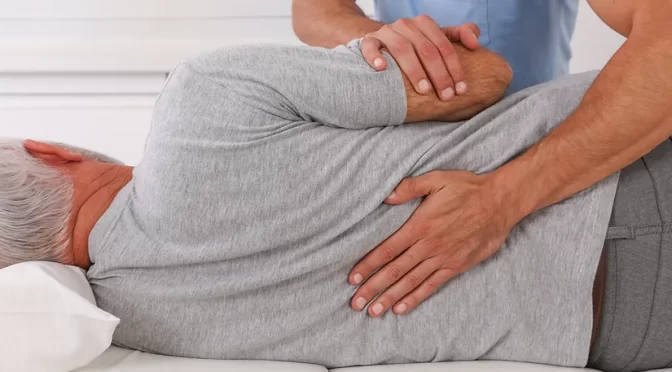Raymond Chang, M.D.,a,b Pak H. Chung, M.D.,b and Zev Rosenwaks, M.D.c
The Institute of East-West Medicine and the Center for Reproductive Medicine and Infertility, Weill Medical College of Cornell University, New York, New York
Objective: To review existing scientific rationale and clinical data in the utilization of acupuncture in the treatment of female infertility.
Design: A MEDLINE computer search was performed to identify relevant articles.
Result(s): Although the understanding of acupuncture is based on ancient medical theory, studies have suggested that certain effects of acupuncture are mediated through endogenous opioid peptides in the central nervous system, particularly �-endorphin. Because these neuropeptides influence gonadotropin secretion through their action on GnRH, it is logical to hypothesize that acupuncture may impact on the menstrual cycle through these neuropeptides. Although studies of adequate design, sample size, and appropriate control on the use of acupuncture on ovulation induction are lacking, there is only one prospective randomized controlled study examining the efficacy of acupuncture in patients undergoing IVF. Besides its central effect, the sympathoinhibitory effects of acupuncture may impact on uterine blood flow.
Conclusion(s): Although the definitive role of acupuncture in the treatment of female infertility is yet to be established, its potential impact centrally on the hypothalamic-pituitary-ovarian axis and peripherally on the uterus needs to be systemically examined. Prospective randomized controlled studies are needed to evaluate the efficacy of acupuncture in female fertility treatment. (Fertil Steril 2002;78:1149–53. ©2002 by American Society for Reproductive Medicine.)
Key Words: Acupuncture, female infertility, in vitro fertilization
Acupuncture as a therapeutic intervention has been extensively studied and is increasingly practiced in the United States. A recent survey of acupuncture released by an NIH Consensus Development Panel (1) indicated that although there are inherent problems of design, sample size, and appropriate controls in the acupuncture literature, promising data exist for the use of acupuncture in treating nausea and vomiting (2), postoperative pain (3–5), addiction (6–9), and general pain syndromes
(10–12). As a medical technique, acupuncture has also been reported as an adjunct in the treatment of various gynecologic problems (13–15).
Although conventional treatment options for female infertility have been well established, there have been few systematic reviews of complementary or alternative approaches to the treatment of infertility. In light of an increasing trend in the use of complementary and alternative medicine (16) and common inquiry and utilization of such approaches by patients suffering from infertility, we intend to review the existing scientific rationale and clinical data based on which acupuncture may exert an influence on the outcome of female fertility.
In examining the potential usefulness of acupuncture in enhancing female fertility, it is appropriate first to give some theoretical background for acupuncture. Although the theory of acupuncture stems from underlying traditional Chinese medicine premises that would define etiologies for infertility in terms of energy disturbances or imbalances, or organ deficiencies and excesses, we intend to review the existing literature by examining modern medical aspects of the central and peripheral modes of action of acupuncture as they impact on the hypothalamic-pituitaryovarian axis and the pelvic organs, respectively. Moreover, the effect of acupuncture on anxiety and stress and ensuing potential indirect effects on female fertility will also be discussed.
BACKGROUND
Acupuncture is the manipulation of thin metallic needles inserted into anatomically defined locations on the body to affect bodily function. The US Food and Drug Administration has recently removed acupuncture needles from the category of experimental medical devices and now regulates them just like it does other devices, such as surgical scalpels and hypodermic needles, under good manufacturing practices and single-use standard of sterility (1).
The general theory of acupuncture is based on the premise that there are patterns of energy flow (Qi) through the body, which are essential for health. Disruption of this flow is believed to be responsible for disease. Acupuncture can correct imbalances of flow at identifiable points close to the skin. According to the proposed international acupuncture nomenclature by The World Health Organization in 1991 (17), the meridian system consists of 20 meridians interconnecting about 400 acupoints. These acupoints correspond to specific areas on the surface of the body, which demonstrate higher electrical conductance because of the presence of higher density of gap junctions along cell borders. They act as converging points (or sinks) for electromagnetic fields. A higher metabolic rate, temperature, and calcium ion concentration are also observed at these points. In principle, positive (anode) pulse stimulation of a point inhibits the organ function, whereas negative (cathode) pulse stimulation enhances that function (18). This forms the basis of electroacupuncture, which applies small electrical needles inserted in specific acupoints.
EFFECTS OF ACUPUNCTURE ON THE HYPOTHALAMIC-PITUITARY-OVARIAN AXIS AND MENSTRUAL CYCLE
Although traditional Chinese medicine understanding of acupuncture is based on ancient medical theory, a modern and scientific neuroendocrine perspective has begun to evolve in the past two decades. Mayer et al. (19) first reported that acupuncture analgesia was induced through endorphin production and antagonized by the narcotic antagonist naloxone. Other studies similarly suggested that certain effects of acupuncture are mediated through the nervous system, within which �-endorphin and other neuropeptides have been implicated (20–22).
Acupuncture was shown by Petti et al. (20) to cause a significant increase in �-endorphin levels during treatment, which lasted for up to 24 hours. �-Endorphin is derived from its precursor protein pro-opiomelanocortin, which is present in abundant amounts in neuronal cells of the arcuate nucleus of the hypothalamus, pituitary, medulla, and in peripheral tissues including intestines and ovaries (23–25). Pro-opiomelanocortin cleaves to form adrenocorticotropic hormone and �-lipoprotein. Further cleavage of �-lipoprotein yields neuropeptides including �-endorphin. Aleem et al. (26, 27) demonstrated the presence of immunoreactive �-endorphin in follicular fluids of both normal and polycystic ovaries.
The influence on gonadotropin secretion and the menstrual cycle by endogenous opioid peptides is believed to be mediated by their action on GnRH secretion (28). The hypothalamic �-endorphin center and the GnRH pulse generator, in fact, are both situated within the arcuate nucleus. Quigley et al. (29) first reported an increased opioid inhibition of LH secretion in hyperprolactinemic patients with pituitary microadenomas. Ching (30) and Orstead and Spics (31), respectively, showed that opioid peptides suppress GnRH release in rats and rabbits.
The role of these neuropeptides, including �-endorphin, in the regulation of GnRH secretion in humans has recently been reviewed by Kalra et al. (32) and Pau and Spies (33). Rossmanith et al. (34) demonstrated the role of opioid peptides in the initiation of the mid-cycle LH surge in normal
cycling women. Meanwhile, measurement of �-endorphin in ovarian follicular fluid of healthy ovulatory women revealed much higher levels than that in circulating plasma (35). The highest level of �-endorphin was noted to be in the preovulatory follicle.
Because acupuncture treatment impacts on �-endorphin levels, which in turn affect GnRH secretion and the menstrual cycle, it is logical to hypothesize that acupuncture may influence ovulation and fertility. Animal studies have revealed that acupuncture treatment normalized GnRH secretion and affected peripheral gonadotropin levels (36, 37).
Various investigators have shown that in normally ovulatory or anovulatory women, acupuncture also influenced plasma levels of FSH, LH, E2, and P (38–40). Acupuncture as a surrogate for hCG in ovulation induction was successfully used by Cai (41). Chen and Yu (42) showed that electroacupuncture normalized the hypothalamic-pituitary-ovarian axis, and in another study Chen (43) reported that 6 of 13 anovulatory cycles responded to acupuncture treatment.
A series published from the University of Heidelberg in Germany (44) used auricular acupuncture on 45 infertile women suffering from ovulatory dysfunction such as oligomenorrhea and luteal phase defect. The control group received medical treatment including bromocriptine, dexamethasone, levothyroxine, clomiphene citrate (CC), and gonadotropin. Although the investigators concluded that resumption of ovulatory cycles occurred significantly more often in the acupuncture group compared to the control group, pregnancy rates were not different between the two groups. However, interpretation of study data was very difficult due to the heterogeneity of the patient population and
treatment modalities. Moreover, seven pregnancies in the acupuncture group were actually achieved with hormone treatment 6 months after acupuncture was stopped.
Another study by Stener-Victorin et al. (45) evaluated the use of electroacupuncture for ovulation induction on 24 oligo/amenorrheic women with polycystic ovarian syndrome (PCOS). The percentage of ovulatory cycles in all subjects was shown to improve from 15% (in a total of 3 months before treatment) to 66% up to 3 months after treatment. Responsive patients were noted to have significantly lower body mass index (BMI), waist-to-hip circumference ratio, serum T concentration, serum T/sex hormone-binding globulin ratio, and serum basal insulin level. They suggested that, in these selected patients with PCOS, acupuncture could be considered as an alternative or adjunct to pharmacological ovulation induction.
A recent prospective randomized controlled study by Paulus et al. (46) compared pregnancy rates in a total of 160 patients undergoing IVF. Acupuncture was performed in 80 patients 25 minutes before and after ET. After controlling confounding variables, clinical pregnancy rate for the acupuncture group (42.5%) was significantly higher than the control group (26.3%).
PERIPHERAL EFFECTS OF ACUPUNCTURE
In addition to the central modulation of the hypothalamicpituitary-ovarian axis, the effects of acupuncture on the autonomic nervous system have been well documented (47). In the early 1980s, Yao et al. (48) reported long-lasting cardiovascular depression induced by acupuncture stimulation of the sciatic nerve in unanesthetized hypertensive rats. In the human, acupuncture was also shown to be sympathoinhibitory. After acupuncture, sympathetic nerve activity as measured by norepinephrine level, skin temperature, blood pressure, and pain tolerance threshold was shown to be decreased (49).
Endometrial thickness, morphology, and uterine artery blood flow have been implicated as important parameters for success of implantation of human embryos (50–57). Despite conflicting results in the utilization of these parameters during various stages of treatment to predict outcome in IVF, it is generally believed that adequate endometrial thickness is required to optimize pregnancy rate. Because endometrial thickness is a function of uterine artery blood flow, Sher and Fisch (58) reported a novel method of using vaginal sildenafil in an attempt to improve uterine artery blood flow and endometrial development in patients undergoing IVF.
With its central sympathoinhibitory effect, acupuncture may contribute to reduce uterine artery impedance and therefore, increase blood flow to the uterus. In fact, SternerVictorin et al. (59) demonstrated this when they performed acupuncture in 10 infertile women who were down-regulated by GnRH analog to avoid the effect of endogenous hormone on uterine artery blood flow.
Pulsatility index in the uterine artery and skin temperature (on the forehead and lumbosacral area) were evaluated in three time periods—before, right after, and 2 weeks after acupuncture treatment (twice a week for 4 weeks). Pulsatility index and skin temperatures were found to be significantly decreased and increased, respectively, both right after and 14 days after acupuncture treatment. This effect was hypothesized to be caused by a central inhibition of sympathetic activity.
ACUPUNCTURE AND STRESS REDUCTION
It has been well documented that infertility causes stress (60–65), and stress reduction may, in turn, improve fertility (66). However, the relationship between stress and infertility is that of a vicious cycle. Social stigmatization, decreased self-esteem, unmet reproductive potential of sexual relationship, physical and mental burden of treatment, and the lack of control on treatment outcome are just some of the factors that can lead to psychological stress in any couple pursuing infertility treatment. In turn, stress may lead to the release of stress hormones and influence mechanisms responsible for a normal ovulatory menstrual cycle through its impact on the hypothalamic-pituitary-ovarian axis.
The use of acupuncture for reducing anxiety and stress possibly through its sympathoinhibitory property and impact on �-endorphin levels has been reviewed (67, 68), and the efficacy of acupuncture in depression has also been studied (69). Because the pharmacological side effects of anxiolytic and antidepressant drugs on infertility treatment outcome are largely unknown, acupuncture may provide an excellent alternative for stress reduction in women undergoing infertility treatment.
DISCUSSION
The practice of acupuncture to treat identifiable pathophysiological conditions has been a subject of intense research. The underlying physiologic mechanisms of acupuncture such as the release of opioids and other peptides in the central and peripheral nervous system, and its inhibition of the sympathetic nervous system have been increasingly established. Promising results from credible trials have emerged for the use of acupuncture in treating various pain syndromes, substance abuse, and chemotherapy-induced nausea and vomiting.
Although the definitive role of acupuncture in the treatment of female infertility is yet to be established, its neuroendocrine effect on the hypothalamic-pituitary-ovarian axis and the preliminary clinical data reviewed here justifies further clinical trials to systematically examine the efficacy of acupuncture in treating various conditions related to female infertility such as ovulatory dysfunction associated with PCOS. The peripheral impact of acupuncture in improving uterine artery blood flow and hence endometrial thickness also provides encouraging data regarding its potential positive effect on implantation.
Whether these potential beneficial effects of acupuncture on the reproductive system can be translated into improving infertility treatment outcomes will eventually mandate randomized controlled studies of adequate design. Because acupuncture is nontoxic and relatively affordable, its indications as an adjunct in assisted reproduction or as an alternative for women who are intolerant, ineligible, or contraindicated for conventional hormone induction of ovulation deserves serious research and exploration.
Appropriate training, credentialing, and certification of acupuncture practitioners by state agencies can facilitate the integration of acupuncture into the treatment of female infertility, and healthcare in general. The NIH Consensus Conference (1) agreed that this is necessary to allow the public and other health practitioners to identify qualified acupuncture practitioners. With the help of the US Department of Education, issues of training and licensure of nonphysician and physician practitioners have been addressed. There is sufficient evidence of acupuncture’s value to expand its use into conventional medicine and treatment of female infertility, and to encourage further studies of its underlying mechanisms as well as to establish its clinical value.
References
- NIH Consensus Development Panel of Acupuncture. Acupuncture.
JAMA 1998;280:1518–24.
- Dundee JW, Ghaly RG, Lynch GA, Fitzpatrick KT, Abram WP. Acupuncture prophylaxis of cancer chemotherapy-induced sickness. J R
Soc Med 1989;82:268–71.
- Christiansen PA, Noreng M, Andersen PE, Nielsen JW. Electroacupuncture and postoperative pain. Br J Anaesth 1989;62:258–62.
- Martelete M, Fiori AMC. Comparative study of analgesic effect of
transcutaneous nerve stimulation (TNS), electroacupuncture (EA), and
meperidine in the treatment of postoperative pain. Acupunct Electrother
Res 1985;10:183–93.
- Lao L, Bergman S, Langenberg P, Wong RH, Berman B. Efficacy of
Chinese acupuncture on postoperative oral surgery pain. Oral Surg Med
Oral Path Oral Radiol Endod 1995;79:423–8.
- Bullock ML, Culliton PD, Olander RT. Controlled trial of acupuncture
for severe recidivist alcoholism. Lancet 1989;1:1435–39.
- Clavel-Chapelon F, Paoletti C, Banhamou S. Smoking cessation rates 4
years after treatment by nicotine gum and acupuncture. Prev Med
1997;26:25–8.
- He D, Berg JE, Hostmark AT. Effects of acupuncture on smoking
cessation or reduction for motivated smokers. Pev Med 1997;26:208–
14.
- Margolin A, Avants SK, Chang P, Kosten TR. Acupuncture for the
treatment of cocaine dependence in methadone-maintained patients.
Am J Addict 1993;2:194–201.
- Patel M, Gutzwiller F, Paccaud F, Marazzi A. A meta-analysis of
acupuncture for chronic pain. Int J Epidemiol 1989;18:900–6.
- Shlay JC, Chaloner K, Max MB, Flaws B, Reichelderfer P, Wentworth
D, et al. Acupuncture and amitriptyline for pain due to HIV-related
peripheral neuropathy: a randomized control trial. JAMA 1998;280:
1590–5.
- Tier Riet G, Kleijnen J, Knipschild P. Acupuncture and chronic pain: a
criteria based meta-analysis. J Clin Epidemiol 1990;43:1191–9.
- Chez RA, Jonas WB. Complementary and alternative medicine. Part II:
Clinical studies in gynecology. Obstet Gynecol Surv 1997;52:709–16.
- Wu XJ, Cui YL, Yang BY, Zhou QM. Observations on the effect of
He-Ne laser acupoint radiation in chronic pelvic inflammation. J Tradit
Chin Med 1987;7:263–5.
- Beal MW. Acupuncture and acupressure. Applications to women’s
reproductive health care. J Nurse Midwifery 1999;44:217–30.
- Eisenberg DM, Davis RB, Ettner SL, Appel S, Wilkey S, Van Rompay
M, et al. Trends in alternative medicine use in the United States,
1990–1997: results of a follow-up national survey. JAMA 1998;280:
1569–75.
- World Health Organization. A proposed standard international acupuncture nomenclature: report of a WHO scientific group. Geneva,
Switzerland: World Health Organization, 1991.
- McCaig CD. Sinal neurite reabsorption and regrowth in vitro depend on
the polarity of an applied electric field. Development 1987;100:31–41.
- Mayer DJ, Price DD, Rafil A. Antagonism of acupuncture analgesia in
man by the narcotic antagonist naloxone. Brain Res 1977;121:368–72.
- Petti F, Bangrazi A, Liguori A, Reale G, Ippoliti F. Effects of acupuncture on immune response related to opioid-like peptides. J Tradit Chin
Med 1998;18:55–63.
- Ulett GA, Han S, Han JS. Electroacupuncture: mechanisms and clinical
application. Biol Psychiatry 1998;44:129–38.
- Ku Y, Chang Y. Beta-endorphin and GABA-mediated depressor effect
of specific electroacupuncture surpasses pressor response of emotional
circuit. Peptides 2001;22:1465–70.
- Facchinetti F, Storchi AR, Petraglia F, Volpe A, Genazzani AR. Expression of proopiomelanocortin-related eptides in human follicular
fluid. Peptides 1988;9:1089–92.
- Gallinelli A, Garuti G, Matteo ML, Genazzani AR, Facchinetti F.
Expression of proopiomelanocortin gene in human ovarian tissue. Hum
Reprod 1995;10:1085–9.
- DeBold CD, Menefee JK, Nicholson WE, Orth DN. Proopiomelanocortin gene is expressed in many normal human tissues and intumors
not associated with ectopic adrenocorticotropin syndrome. Mol Endocrinol 1988;2:862–70.
- Aleem FA, Eltabbakh GH, Omar RA, Couthren AL. Ovarian follicular
fluid beta-endorphin levels in normal and polycystic ovaries. Am J
Obstet Gynecol 1987;156:1197–200.
- Aleem FA, Omar RA, Eltabbakh GH. Immunoreative beta-endorphin in
human ovaries. Fertil Steril 1986;45:507–11.
- Ferin M, Van de Wiele RL. Endogenous opioid peptides and the control
of the menstrual cycle. Eur J Obstet Gynecol Repro Biol 1984;10:365–
73.
- Quigley ME, Sheeham KL, Casper RF, Yen SSC. Evidence for an
increased opioid inhibition of luteinizing hormone secretion in hyperprolactinemic patients with pituitary microadenoma. J Clin Endocrinol
Metabol 1980;50:427–46.
- Ching M. Morphine suppresses the proestrous surge of GnRH in
pituitary portal plasma of rats. Endocrinology 1983;112:2209–11.
- Orstead KM, Spics HG. Inhibition of hypothalamic gonadotropin releasing hormone release by endogenous opioid peptides in the female
rabbit. Neuroendocrinology 1987;46:14–23.
- Kalra SP, Horvath T, Naftolin F, Xu B, Pu S, Kalra PS. The interactive
language of the hypothalamus for the gonadotropin releasing hormone
(GNRH) system. J Neuroendocrinol 1997;9:569–76.
- Pau KY, Spies HG. Neuroendocrine signals in the regulation of gonadotropin-releasing hormone secretion. Chin J Physiol 1997;40:181–96.
- Rossmanith WG, Mortola JF, Yen SSC. Role of endogenous opioid
peptides in the initiation of the mid-cycle luteinizing hormone surge in
normal cycling women. J Clin Endocrinol Metab 1988;67:695–700.
- Petraglia F, DiMeo G, Storchi R, Segre A, Facchinette F, Szalay S, et
al. Proopiomelanocortin-related peptides and methionine enkephalin in
human follicular fluid: changes during the menstrual cycle. Am J Obstet
Gynecol 1987;157:142–6.
- Lin JH, Liu SH, Chan WW, Wu LS, Pi WP. Effects of electroacupuncture and gonadotropin-releasing hormone treatments on hormone
changes in anoestrous sows. Am J Chin Med 1988;16:117–26.
- Yang SP, Yu J, He L. Release of gonadotropin-releasing hormone
(GnRH) from the medio-basal hypothalamus induced by electroacupuncture in conscious female rabbits. Acupunct Electrother Res 1994;
19:19–27.
- Aso T, Motohashi T, Murata M, Nishimura T, Kakizaki K. The influence of acupuncture stimulation on plasma levels of LH, FSH, progesterone and estradiol in normally ovulating women. Am J Chin Med
1976;4:391–401.
- Yu J, Zheng HM, Ping SM. Changes in serum FSH, LH and ovarian
follicular growth during electroacupuncture for induction of ovulation
[Chinese]. Chung Hsi I Chieh Ho Tsa Chih 1989;9:199–202.
- Mo X, Li D, Pu Y, Xi G, Le X, Fu Z. Clinical studies on the mechanism
of acupuncture stimulation of ovulation. J Trad Chin Med 1993;13:
115–9.
- Cai X. Substitution of acupuncture for human chorionic gonadotropin
in ovulation induction. J Tradit Chin Med 1997;17:119–21.
- Chen BY, Yu J. Relationship between blood radioimmunoreactive
beta-endorphin and hand skin temperature during the electro-acupuncture induction of ovulation. Acupunct Electrother Res 1991;16:1–5.
- Chen BY. Acupuncture normalizes dysfunction of hypothalamic-pituitary-ovarian axis. Acupunct Electrother Res 1997;22:97–108.
- Gerhard I, Postneek F. Auricular acupuncture in the treatment of female
infertility. Gynecol Endocrinol 1992;6:171–81.
- Stener-Victorin E, Waldenstrom U, Tagnfors U, Lundeberg T, Lundstedt G, Janson PO. Effects of electro-acupuncture on anovulation in women with polycystic ovary syndrome. Acta Obstet Gynecol Scand 2000;79:180–8.
- Paulus WE, Zhang M, Strehler E, El-Danasouri I, Sterzik K. Influence of acupuncture on the pregnancy rate in patients who undergo assisted reproduction therapy. Fert Steril 2002;77:721–4.
- Haker E, Egekvist H, Bjerring P. Effect of sensory stimulation (acupuncture) on sympathetic and parasympathetic activities in healthy
subjects. J Automomic Nerv Sys 2000;79:52–9.
- Yao T, Andersson S, Thoren P. Long-lasting cardiovascular depression
induced by acupuncture-like stimulation of the sciatic nerve in unanaesthetized spontaneously hypertensive rats. Brain Res 1982;240:77–
85.
- Knardahl S, Elam M, Olausson B, Wallin BG. Sympathetic nerve
activity after acupuncture in humans. Pain 1998;75:19–25.
- Noyes N, Liu HC, Sultan K, Schattman G, Rosenwaks Z. Endometrial
thickness appears to be a significant factor in embryo implantation in
in-vitro fertilization. Hum Reprod 1995;10:919–22.
- Schild RL, Knoblock C, Dorn C, Fimmers R, van der Ven H, Hansmann M. Endometrial receptivity in an in vitro fertilization program as
assessed by spiral artery blood flow, endometrial thickness, endometrial
volume, and uterine artery blood flow. Fertil Steril 2001;75:361–6.
- Chiang CH, Hsieh TT, Chang MY, Shiau CS, Hou HC, Hsu JJ, et al.
Prediction of pregnancy rate of in vitro fertilization and embryo transfer
in women aged 40 and over with basal uterine artery pulsatility index.
J Assist Reprod Genet 2000;17:409–14.
- Engmann L, Sladkevicius P, Agrawal R, Bekir J, Campbell S, Tan SL.
The pattern of changes in ovarian stromal and uterine artery blood flow
velocities during in vitro fertilization treatment and its relationship with
outcome of the cycle. Ultrasound Obstet Gynecol 1999;13:26–33.
- Salle B, Bied-Damon V, Benchaib M, Desperes S, Gaucherand P,
Rudigoz RC. Preliminary report of an ultrasonography and colour
Doppler uterine score to predict uterine receptivity in an in-vitro fertilization programme. Hum Reprod 1998;13:1669–73.
- Aytoz A, Ubaldi F, Tournaye H, Nagy ZP, Van Steirteghem A,
Devroey P. The predictive value of uterine artery blood flow measurements for uterine receptivity in an intracytoplasmic sperm injection
program. Fertil Steril 1997;68:935–7.
- Friedler S, Schenker JG, Herman A, Lewin A. The role of ultrasonography in the evaluation of endometrial receptivity following assisted reproductive treatments: a critical review. Hum Reprod Update 1996; 2:323–35.
- Zaidi J, Pittrof R, Shaker A, Kyei-Mensah A, Campbell S, Tan SL. Assessment of uterine artery blood flow on the day of human chorionic gonadotropin administration by transvaginal color Doppler ultrasound in an in vitro fertilization program. Fertil Steril 1996;65:377–81.
- Sher G, Fisch JD. Vaginal sildenifil (Viagra): a preliminary report of a
novel method to improve uterine artery blood flow and endometrial
development in patients undergoing IVF. Hum Reprod 2000;15:806–9.
- Stener-Victorin E, Waldenstrom U, Andersson SA, Wikland M. Reduction of blood flow impedance in the uterine arteries of infertile
women with electro-acupuncture. Hum Reprod 1996;11:1314–7.
- Schenker JG, Meirow D, Schenker E. Stress and human reproduction.
Eur J Obstet Gynecol Reprod Biol 1992;45:1–8.
- Eugster A, Vingerhoets AJ. Psychological aspects of in vitro fertilization: a review. Soc Sci Med 1999;48:575–89.
- Domar AD, Broome A, Zuttermeister PC, Seibel M, Friedman R. The
prevalence and predictability of depression in infertile women. Fertil
Steril 1992;58:1158–63.
- Domar AD, Zuttermeister PC, Friedman R. The psychological impact
of infertility: a comparison with patients with other medical conditions.
J Psychosom Obstet Gynaecol 1993;14:45–52.
- Mahlstedt PP, Macduff S, Bernstein J. Emotional factors in in vitro
fertilization and embryo transfer process. J In Vitro Fert Embryo Transf
1987;4:232–5.
- Seibel MM, Taymor ML. Emotional aspects of infertility. Fertil Steril
1982;37:137–45.
- Domar AS, Seibel MM, Benson H. The mind/body program for infertility: a new behavioral treatment approach for women with infertility.
Fertil Steril 1990;53:246–9.
- Chen A. An introduction to sequential electric acupuncture (SEA) in the
treatment of stress related physical and mental disorders. Acupunct
Electrother Res 1992;17:273–83.
- Dong JT. Research on the reduction of anxiety and depression with
acupuncture. Am J Acupunct 1993;21:327–30.
- Luo H, Meng F, Jia Y, Zhao X. Clinical research on the therapeutic
effect of the electroacupuncture treatment in patients with depression.
Psychiatry Clin Neurosci 1998;52:S338–40.


